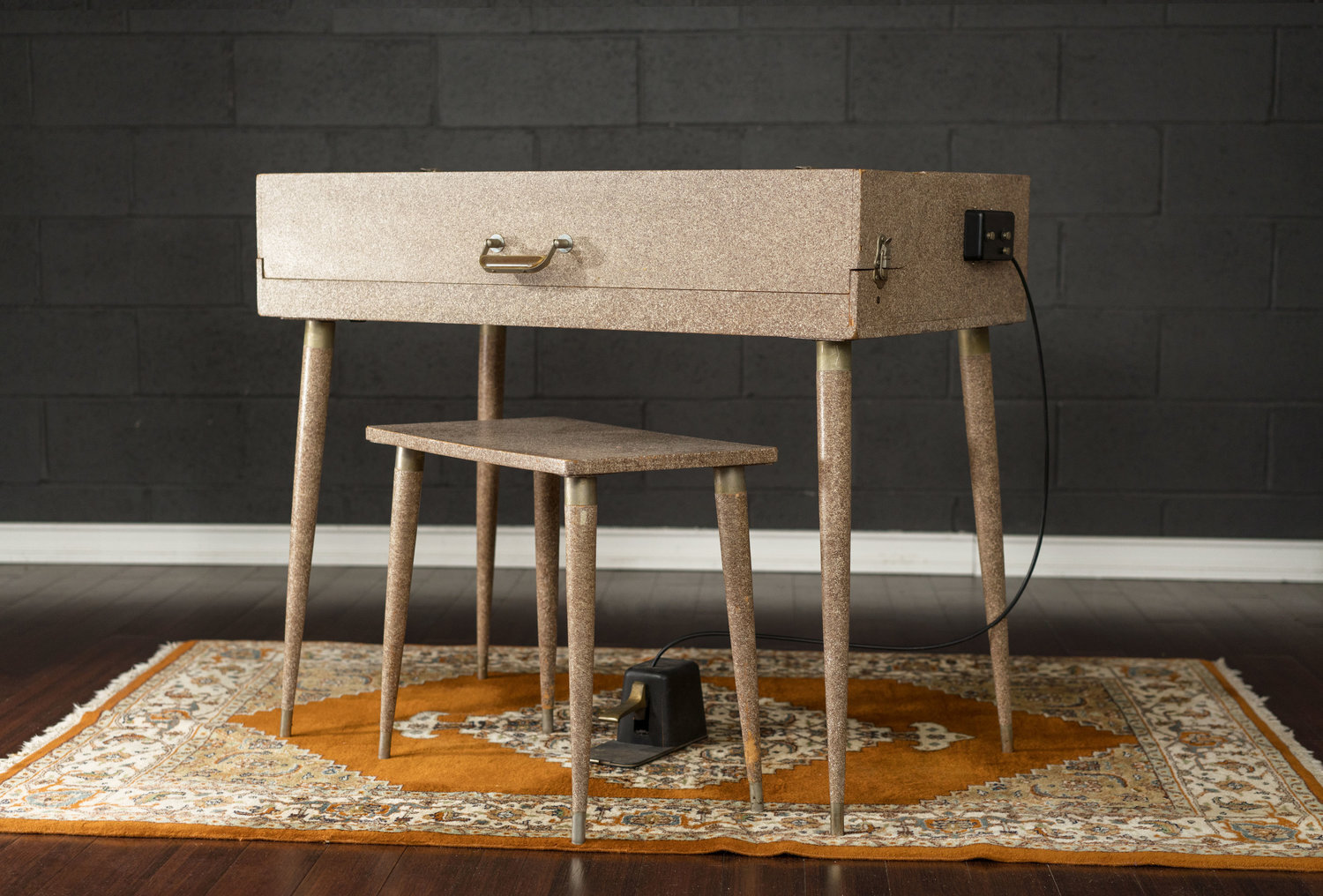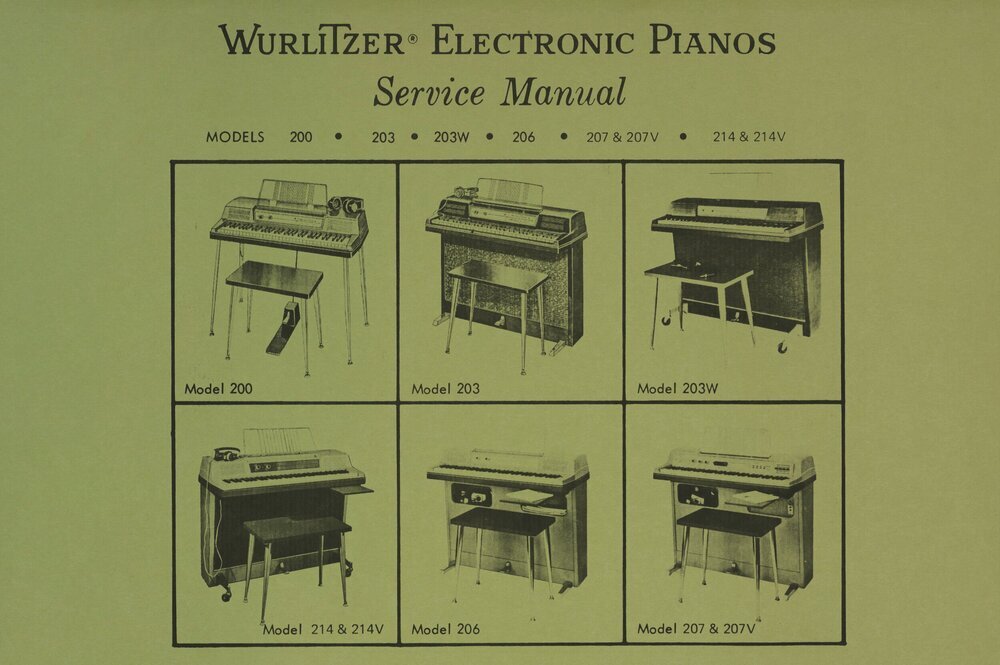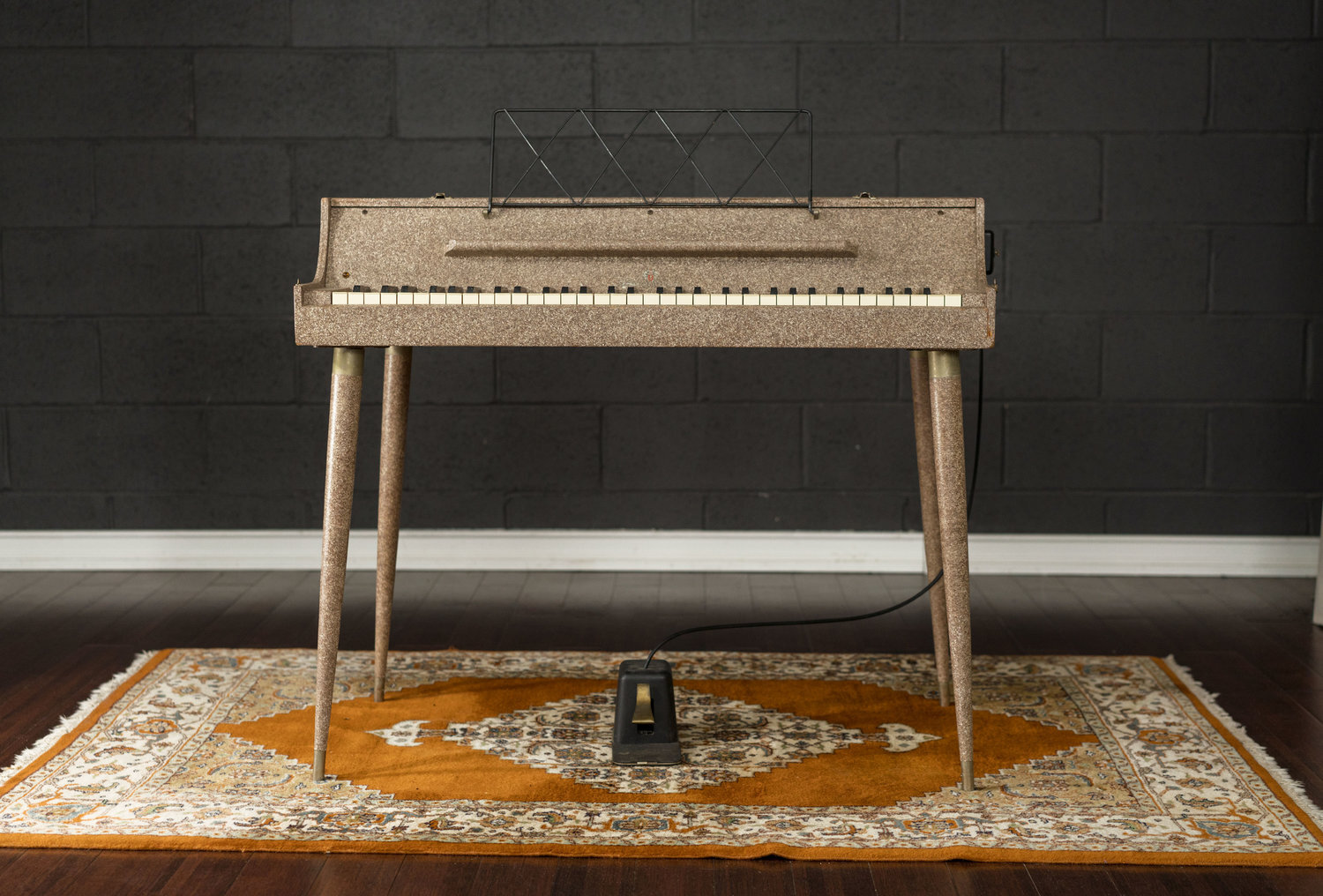On the Wurlitzer 112 service manual
We have a lot of affection for this 112 service manual. First of all, the manual’s Introduction conveys a lot of the excitement surrounding the electronic piano, now available in the new-and-improved 112a version. It is an “entirely new concept!” It is “similar in many ways to the conventional piano” and yet “quite different!” It is a “piano with a purpose!!”
And that purpose is to sell a whole lot of “standard, 88-note pianos.” Wurlitzer does acknowledge that the electronic piano “is designed to be sold on its own merits,” but this is a clear vision of the 112 as a potential starter keyboard that can be used to drive sales of more expensive pianos. This is another instance of how Wurlitzer was always torn between two competing ideas: the electronic piano as a stand-alone instrument, and the electronic piano as an entry-level tool for beginners.
We know that Wurlitzer had plans for the 112 as a professional instrument. There is evidence in the patent drawings, and anyway by the time this manual was released, professional musicians had started using Wurlitzer electronic pianos. Duke Ellington played a Wurlitzer on a 1955 recording, probably a model 110 or 111.
There’s also the fact that the service manual makes a point of comparing electronic pianos and traditional pianos. Consider the fact that half the information is not present in the 112 service manual at all; you need to refer to the conventional piano service manual to read about it.[1] Consider this sentence: “Like the conventional piano, the regulation of the keys and action on the Wurlitzer Electronic Piano is very important.” It is a filler sentence that stands out in an otherwise utilitarian document; its primary purpose appears to be to emphasize the relationship between the two instruments: in other words, to say that the Wurlitzer Electronic Piano is, in fact, “like the conventional piano.”
So why make the point that the electronic piano “will become an important factor increasing the sale of standard, 88-note pianos”? Maybe Wurlitzer just wanted to provide comfort and hope to the “piano men” who would end up servicing this new invention. The 112 is incredibly frustrating to work on, and no doubt it was equally frustrating when it was first invented. (At least today it has the excuse of being old.) Even now, a lot of conventional piano tuners still consider Wurlitzers to be toys, despite how many iconic records and performances these keyboards appear in. Imagine what piano tuners thought about Wurlitzers when there were only a handful of artists making the case for electronic pianos (possibly only Duke Ellington, who in 1955 was at the lowest and most obscure point of his career).
Wurlitzer 112 Service Manual Readers’ Guide
The service manual is a very good resource if you are learning to regulate your Wurlitzer. Pertinent pages on mechanical adjustments include:
Key and Action Regulation (pages 9 and 10). This is a fairly comprehensive description on how to regulate a 112. There is also a parallel description of how to regulate a 112a.
Level Keys and Damper Adjustment on page 11. These are subtle adjustments that can improve the feel of your keyboard.
Blocking Hammers on page 11 and Tones not produced on light blow on page 12 contain a brief description on how to troubleshoot these two common complains.
Adjusting and checking reeds on page 12 describes how to tune a reed. This should be read in conjunction with Tone Producing Principle (page 7), which explains how the reeds work. Note that “condenser” is an old-fashioned word for “capacitor” (hence, the condenser microphone, which works in the same manner).
Pages on connecting headphones and extension speakers:
The section on Earphones and External Speaker (page 13) should be taken with a grain of salt. Using a speaker with too low of an impedance can stress the power tubes and output transformer. This was probably fine when the amplifier was first released, but at this point we recommend babying the output transformer.
The section on External Amplification (page 13) really overstates the versatility of the 112’s aux output. It claims that the aux out “provides a high impedance output that can be fed into any standard mike, record, or musical instrument input.” Okay, fine, except that the aux output jack is slightly smaller than a standard 1/4” jack, so good luck finding the cable that’s going to make it happen. If you do happen to have that elusive 1/6”-to-1/4” cable (or whatever fits in that jack — we honestly aren’t positive), it can indeed be used as an aux output. However, as it is a high-impedance output, we prefer to convert it to a buffered low-impedance aux out (preferably as one-half of an effects loop).
Pages related to the amplifier are pretty much limited to the schematic and a diagram of the chassis. If you need to view these pages, download the Manuals & Diagrams PDF. These will have better-quality, printable versions of these pages.
Our favorite miscellaneous points:
“These tubes are not special tubes and can be obtained easily in your own locality.” (5) Yes! This is still true! Unlike certain other keyboards’ tube complements…we’re looking at you, Wurlitzer 145…………………
“The piano volume control is electrically designed so that the amplifier characteristics are maintained at various volume levels.” (6) What?? First of all, the volume control is just a regular volume control. It is positioned between a coupling cap and a tube grid and has no associated circuitry other than the pot itself. It doesn’t even have a bright cap on it (which would preserve treble at low volumes). Maybe Wurlitzer was referring to the fact that the amp was designed for relatively low-gain operation? The two preamp tubes are both 12AU7s, so they won’t drive when you turn the amp up. You can replace both with 12AX7s for more volume and power.
The statement in the Introduction that this service manual “is not intended as a piano service course in ‘ten easy lessons.’’ (1) Proving that passive aggression is, in fact, timeless.
Also, how do we get our hands on the Wurlitzer Electronic Piano Merchandising Program, describing “the story of the development of the Wurlitzer Electronic Piano??” (16) It is “a fascinating one,” the manual notes, twisting the knife.
“All tubes should be checked before working on the amplifier.” (13) This important piece of wisdom is our Trivial Problems article in a nutshell.
[1] Specifically, instructions on easing keys, spacing keys, and “damaged keys,” as well as the section on “Filing Claims with Carriers,” i.e., what to do if the keyboard arrives damaged. Of all the action parts, Wurlitzer keys are probably the thing most similar to their conventional piano counterparts, so it makes sense that those are the sections they chose to cross-reference with the piano manual. And, well, regarding filing claims — Wurlitzer was definitely not going to repeat that info twice.
Further Reading
Browse all of our articles on restoring vintage gear. Or, click on an image below.






